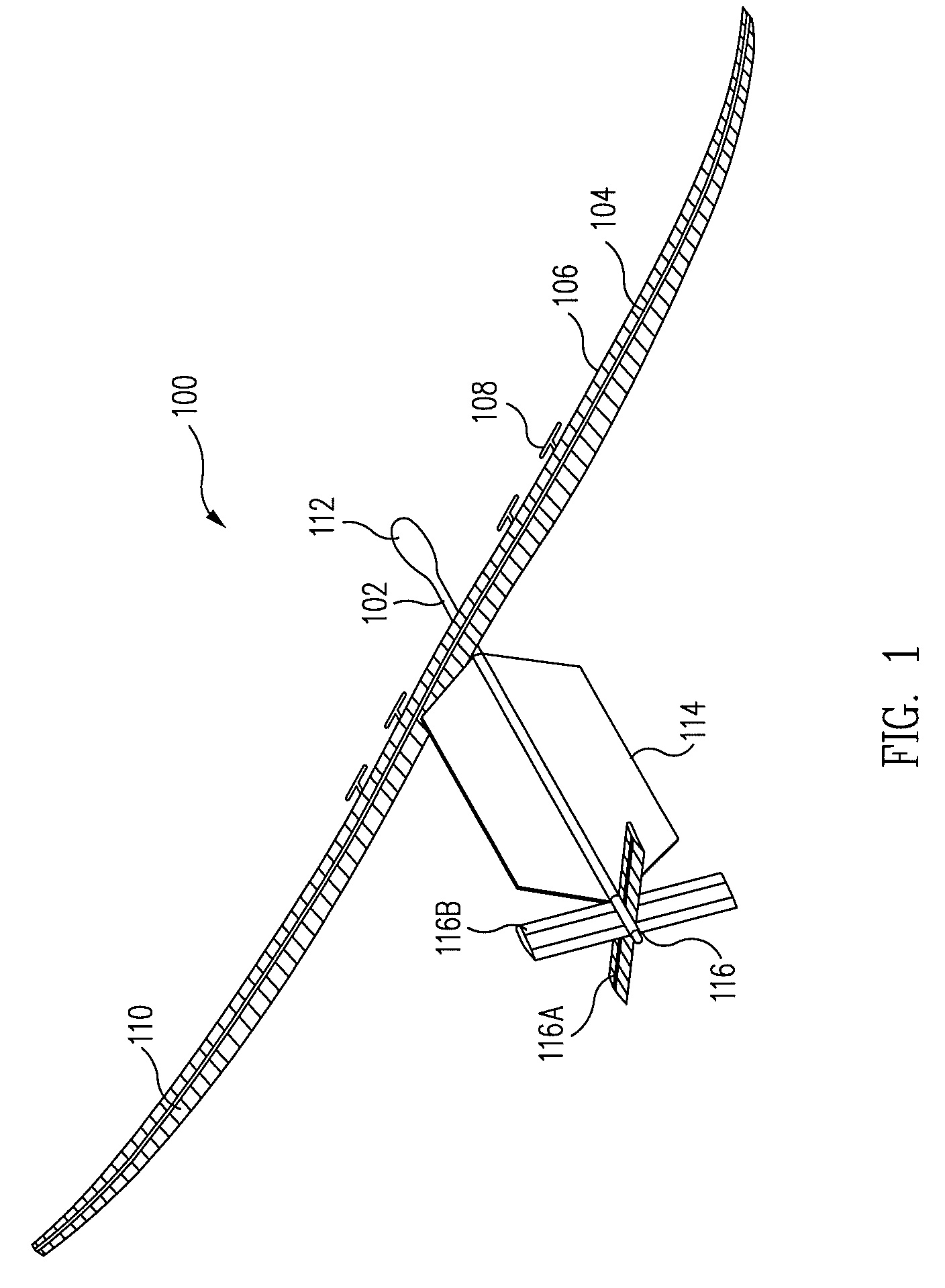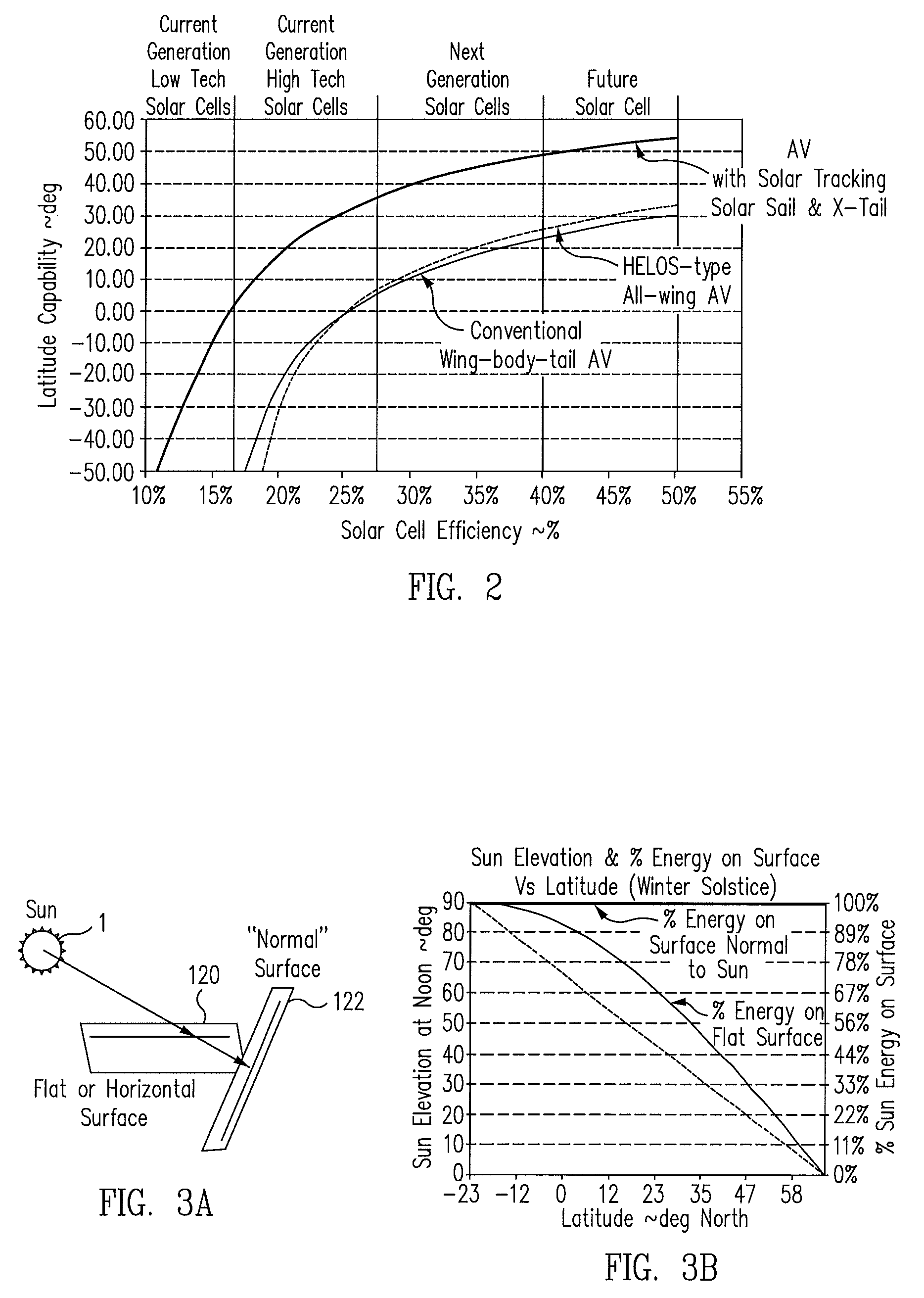Solar powered aerial vehicle
a solar energy and aerial vehicle technology, applied in the field of aircraft and aerial vehicles, can solve the problems of reducing the return rate of solar energy, affecting the design of solar energy-based aerial vehicles, and only limited operational value of aerial vehicles capable of operating only near the equator or in the long daylight hours of the summer months. achieve the effect of solar energy
- Summary
- Abstract
- Description
- Claims
- Application Information
AI Technical Summary
Benefits of technology
Problems solved by technology
Method used
Image
Examples
Embodiment Construction
[0022]FIG. 1 is a perspective view of an exemplary embodiment of an unmanned solar powered aerial vehicle (USPAV) 100. The vehicle comprises an elongated tubular fuselage 102 and an elongated, relatively narrow (i.e., high-aspect-ratio) wing 104 adapted for efficient, high-altitude, relatively slow flight. The wing mounts a plurality of electric motors 106, each equipped with, e.g., a variable- or fixed-pitch propeller 108, and in one embodiment, may also include an array of solar cells 110 disposed on the upper surface thereof. An enlarged payload and control housing 112 is located at the nose end of the fuselage, and is adapted to carry flight command and control avionics and instrumentation, rechargeable batteries or other energy storage elements, and a payload, such as surveillance cameras, radio or television signal broadcasting or repeating equipment, weather sensors and data recorders, or the like.
[0023]Of importance, the exemplary vehicle 100 further includes a tracking sola...
PUM
 Login to View More
Login to View More Abstract
Description
Claims
Application Information
 Login to View More
Login to View More - R&D
- Intellectual Property
- Life Sciences
- Materials
- Tech Scout
- Unparalleled Data Quality
- Higher Quality Content
- 60% Fewer Hallucinations
Browse by: Latest US Patents, China's latest patents, Technical Efficacy Thesaurus, Application Domain, Technology Topic, Popular Technical Reports.
© 2025 PatSnap. All rights reserved.Legal|Privacy policy|Modern Slavery Act Transparency Statement|Sitemap|About US| Contact US: help@patsnap.com



